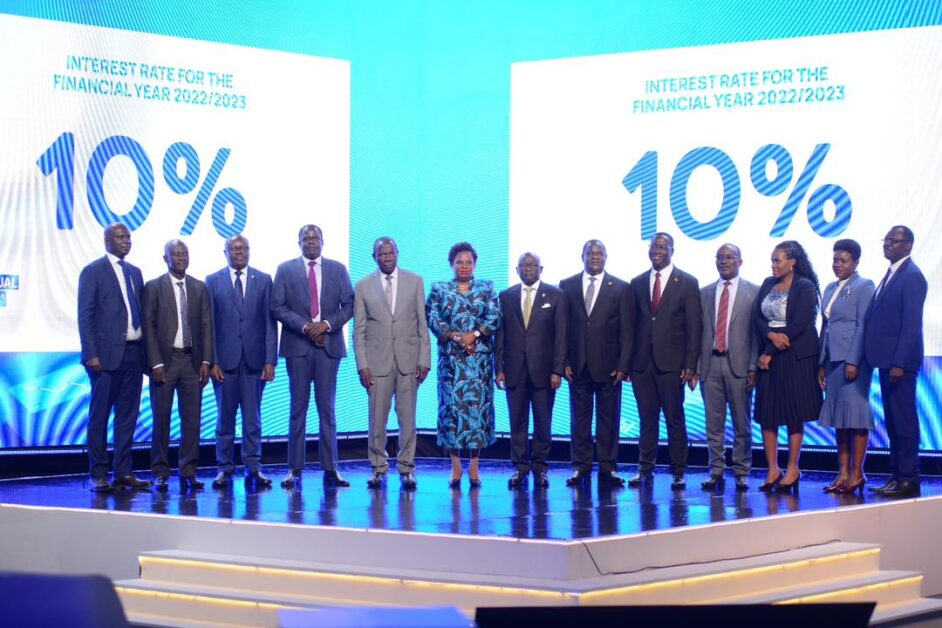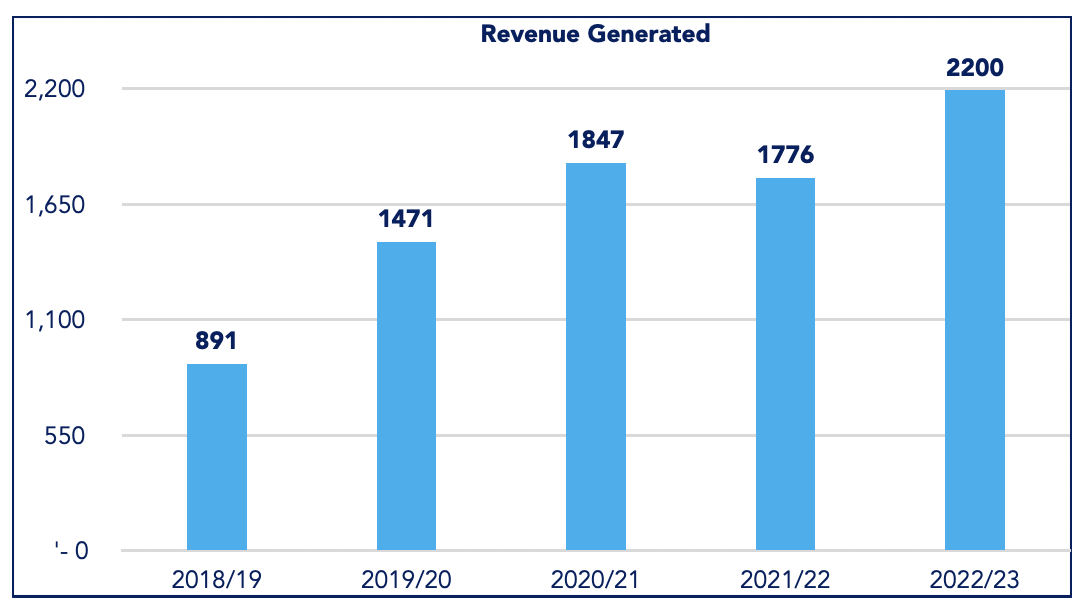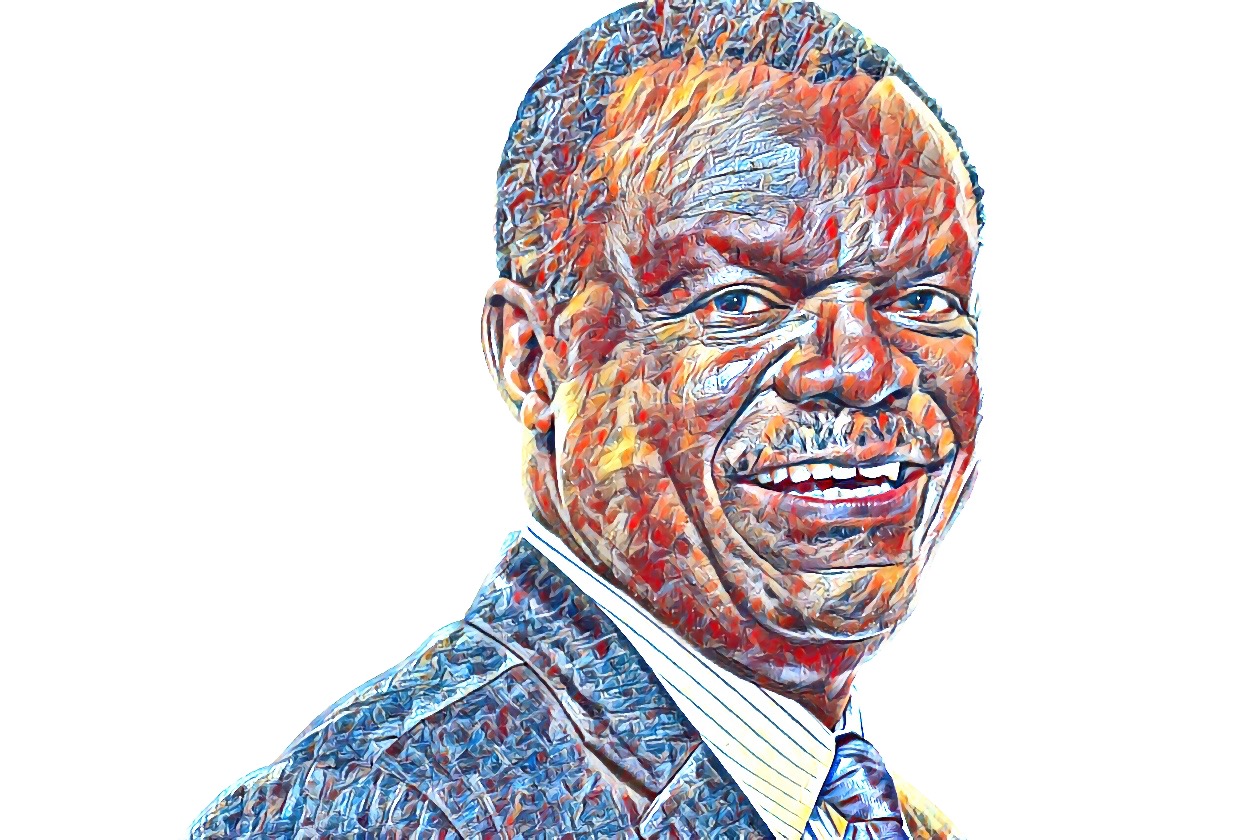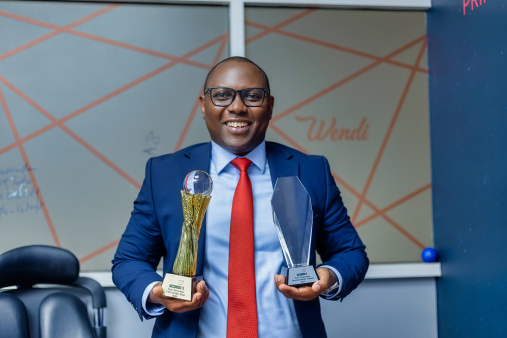The just-announced FY2022/23 was quite surprising for many a stakeholder. Given what happened in the financial markets, here and globally but more importantly, the ‘negative noise’ that dominated much of the second half, many a stakeholder didn’t expect better performance than what we experienced in FY2021/22.
It is an amazing story. If you look at what the fund went through in the last six months of FY2022/23, I can say it really tested the trust that the members have in the Fund.
To put it into perspective, we had a contribution target of UGX135 billion per month in FY2022/23. As of the end of December 2022, we were UGX51 billion behind the target for the H1 2022/23. In January-February right amid the hearings, our monthly numbers began to tick up to UGX140 billion per month, right through UGX148 billion. In June FY2022/23, the last month of the financial year, we collected a record UGX192 billion! Thus, we ended the year at UGX120 billion above target!
You could say okay, maybe this is mandatory savings, but even for voluntary savings, we were above target. On the voluntary savings front, our target was to collect UGX1.6 billion monthly and around November 2022, before the noise and intense scrutiny began, we were at about UGX1.8 billion. In December 2022, it dropped to UGX1.5bn and dropped further to UGX1.1 billion in January 2023, probably because of Christmas and the back-to-school season. But in February 2023, it went up to UGX2.5 bn and that trajectory stayed high, to UGX2.6 billion and then UGX2.8 billion for the year.
As a result, our collections for the year reached UGX1.72 trillion, an increase of 16% from the UGX1.49 trillion the previous year and UGX140 billion above our target of UGX1.58 trillion. Our realised revenue was also above the target⏤ we hit UGX2.2 trillion above the UGX1.9 billion target. Overall the Fund’s Assets Under Management (AUM) grew by UGX1.32 trillion, from UGX17.25 trillion to UGX18.56 trillion in the kind of headwinds we had. And we did this with improved customer satisfaction numbers⏤ from 86% to 87% and I must say the customer satisfaction survey was completed in May 2023, at the height of the intense scrutiny and internal disruptions that we had. The fact that we held our own, is a testimony of the strong stakeholder trust and confidence.
In your view, what do you attribute these strong stakeholder trust and confidence levels to?
Well, I want to believe that this goes back to a strong performance track record of the Fund over the last decade. Before these headwinds, we had managed to restore a period of calm and growth, previously unknown in the Fund’s history. Both the IGG’s report and the Parliamentary report on the Fund at least all acknowledged this.
Between 2009/10 and 2021/22 the team at the Fund mounted an incredible CAGR of 20% in assets under management from UGX1.7 trillion in 2009/10 to UGX17 trillion! That is a growth of over 10 times or 922%! We also consistently delivered on our promise to pay interest rates above the 10-year rate inflation rate. Customer satisfaction also grew to 86% and staff satisfaction to 94% from 49% and 60% respectively.
The second reason for this must be, because we have more engaged and informed stakeholders who were able to see through the fog, and keep their eyes on the ball.

Lastly, I would also attribute it to continuity in management. The fact that more or less, the same team that delivered the above strong performance track record maintained, under the supervision of a strong board and the oversight of the Gender and Finance ministries, I believe, helped embolden stakeholder confidence.
I do understand that the Fund hopes to achieve the UGX20 trillion targets under its 2014/15-2024/25 10-year strategic plan by June 2024, a year ahead of schedule. The Fund is now focusing on another 10-year cycle plan to achieve UGX50 trillion by 2035. It has taken the Fund 10 years to grow by UGX14.2 trillion⏤ from UGX4.4 trillion in 2013/14 to UGX18.6 trillion in 2022/23, do you believe you will be able to now add UGX30 trillion in the next 10 years?
Yes, we can, and we shall.
Let me take you through our thinking behind this, our UGX50 trillion 2035 vision.
As of the end of June 2023, out of the 2.2 million registered members, only 1.06 million members had balances with the Fund and of these, only 704,000 were active. Of those who held balances, 83% have less than UGX 10 million and of those, 50% have less than UGX 1 million. Out of the 88,200 registered employers, only 45,660 are active.
That number represents about 10% of Uganda’s working population.
If our purpose is to make lives better, we surely can’t exist to make lives better for only 10% of Uganda’s working population. We want to widen the net and cover at least half (50%) of likely eligible workers.
To be able to achieve that, we are looking much beyond the formal sector and going into the informal sector as well. At the heart of our strategy is two major strategic thrusts. One, is increasing the willingness to save and that covers everything from financial literacy to compliance enforcement, and making stakeholders intensely aware that it is it’s important to save. The second one is to increase the ability or the capacity to save. You know, it is one thing, for somebody wanting to save, but they don’t have the capacity or the income from which to save and this is common in the informal sector.
That is why we have come up with a programme called the NSSF Hi-Innovator in collaboration with the Mastercard Foundation. Hi-Innovator basically allows us to invest in startups and this is because globally, 80% of new jobs are created by small and growing businesses. In Uganda, nobody puts money into startups at the scale we are doing and or planning to do. The idea is, that if we put money in a startup and it begins to grow, it will hire people who become our members.
Through the Hi-Innovator, we have so far seed-funded 265 businesses, 61% of which are women-led businesses. We have also trained 16,919 entrepreneurs. From this, we have created and sustained 88,674 jobs and created 1,800 new contributors to the Fund bringing in over UGX200 million in contributions. This is something that works.
It is important to note that in Uganda, the biggest component of the informal sector is in the agriculture sector. Whatever you do, you cannot forget agriculture.

The biggest problem, I think in agriculture is, as a country, and if you look at all government programmes- NAADs and now the Operation Wealth Creation (OWC) we’ve assumed and focused on the production/side. We tend to think the farmer is the problem, We have never at any one time, addressed the demand side of the market and yet the market is so critical because it is a motivator for production. Because we’ve neglected stimulating and directing demand, farmers have been planting a lot of stuff without knowing how it will be absorbed.
So now what we’re trying to do with the Government through Uganda Development Corporation (UDC)⏤ the investing arm of the Government of Uganda whose mission is to establish and or invest in sustainable investments in areas strategic to Uganda’s social and economic transformation, and prosperity of Uganda. I won’t give you the details of this, but our intervention in agriculture is going to be in that area. The demand side. We are going through our internal processes, we hope it is approved. We will then create a national marketing company whose job is to identify markets for Ugandan products and work backwards into the various actors in the market⏤ transporters, warehouse owners etc. and aggregate this. Farmers need to know who is buying, what the price is etc. This will change the minds of the farmer from just growing anyhow, to growing for the market. At that level, we can even be able to dictate on the levels of quality, and they will respond to the quantities you want etc. because you’re giving them a fair and predictable price. When we do that, and the farmer begins to make more money, that farmer will save with the Fund and our target of 50% coverage comes closer to being fulfilled. Remember agriculture accounts for 24% but contributes a disproportionately much lower portion of NSSF savings.
In 2019, we did a pilot study that was based on a simple hypothesis⏤ that if you intervene on the demand side, and farmers make more money, they will save some of that money. Our target was 100 farmers in Mityana for 3 months. At that time, the price of maize was UGX500 a kilo. We were able to get a buyer, who came and bought at UGX620. By the end of the 3 months, we had managed to recruit 206 farmers into the programme and saved with the Fund between 20% to 40% of the money they made. That tells us that if we intervene in that space, and the farmers make more money, you will give them the capacity to save something.
By aggressively giving especially the informal sector startups and in the agriculture sector, we believe we can over the next 10 years touch at least half of the 7 million households in Uganda. It is going to be a very phenomenal story.
The Fund is going to be more visible and more present, in the lives of ordinary Ugandans. Our vision is UGX50 trillion by 2035 from the current UGX18.5 trillion and we want to do that, when the member is 95% fully satisfied and our staff too and we are paying good interest/returns. We believe if we do that deliberately, and target industries that have the most impact, then Ugandans are going to be more proud that they are saving with the Fund.
What is the nature of this funding? Are you giving them grants or are you taking up equity?
It is a hybrid I would say, but it is also an idea in motion. We want to look at ourselves as a catalytic organizer for informal groups.
For now, we are largely making grants, but we take an investment option that we can convert into 6% equity. Our objective is not to make money off them, but rather how we can help them grow. For example, we have seven companies that are at different stages of attracting venture capital to the tune of USD100,000 to USD300,000. We think by intervening in that space, we are de-risking most of these startups to make them more attractive to financial institutions and other forms of alternative capital such as private equity and venture capital.
Currently, we have 265 startups and we will expand that to 2000 by 2030.
Our assumption is that even if the failure rate for businesses, in Uganda, is 90%, and out of the 2000, 10% go on to become your next big companies and our big contributors, that is about 200 big companies. We will have created a big future for the Fund and in the process, doing a lot of good for our motherland. Besides, with NSSF’s handholding, that failure rate will be reduced, maybe to 45%. It is amazing what we are doing there.
One this you must remember is that we are an investment fund. The biggest mistake people make is to think of us as a consumptive government entity, with a budget, that we have to spend. No. Ours is spending money to make more money and that means we must also take on some good level of risk which is why we diversify our investments. The reason you diversify is, you know that not all of your investments will be successful at the same time, but in totality, you will grow.
Recently when we were in Parliament, people thought that we should get everything right. No, we cannot. Because when you invest in tomorrow, tomorrow has so many unknowns. Yes, when tomorrow comes, one may have the benefit of hindsight and say you shouldn’t have made that decision, me who is making the decision today, I am only using the set of information that I have today. But all in all, if we have been able to grow the Fund⏤ by UGX1.32 trillion last year and by more than 10 times in the last decade, it means that we have made more right decisions, than wrong ones. That is what our members and stakeholders must take into consideration.
NSSF has in the recent past ramped up its developments into real estate, especially homes. There have been some misgivings among members that they are not being assisted to tap into their balances to secure some homes. With the massive upcoming Lubowa Housing project, is NSSF thinking of financing e.g. its members to acquire homes?
I agree, but we need to change our law because there is a clause in our law, that stops us from doing that. Those are some of the amendments that we have to make. We have to support our members to do that. URBRA came out with an announcement, but then we found out that in our laws, there is a restrictive clause, so that we can enable our members to utilise their balances to acquire their own homes.
Hypothetically, how would this work?
How it works in other places especially, is, supposing you have UGX100 million in savings, the member can use up to 50% as collateral. If you’re buying a house for UGX200 million, for example, the bank you are going to get a mortgage from now knows that not only do you have that house as collateral, but you also have a liquid balance as collateral. That should help de-risk the financing of that asset or even help you get an even bigger home because your collateral is substantially larger. It could also help eliminate the need for or reduce the percentage of the downpayment required- which has been a big barrier to mortgages. Because of the derisking, the mortgagor is also able to get some good interest rates for something more affordable.
However, the member’s savings can only be turned to as a last resort. The financial institutions must have gone through a lot of processes before they touch the member’s money.
Lastly, what worries you? What major challenges do you see going forward?
I think the biggest challenge is really maintaining the trust members have in us as well as keep meeting the high expectations that we have set for ourselves because of our past track record. We must remain a well-governed organisation, an oasis of good management, regardless of what comes.
And from us, there is a commitment that yes, we may make mistakes, but that will not be because they are deliberate. And even then, we will certainly continue doing much more good things with our eyes on the big UGX50 trillion, keeping interest payments above the 10% average inflation rate and pushing both customer satisfaction and staff engagement at 100%.

 Keeping Agents Open for Business: Inside the dfcu Weekend Agent Float Loan.
Keeping Agents Open for Business: Inside the dfcu Weekend Agent Float Loan.


